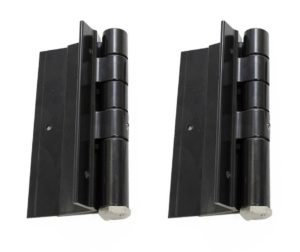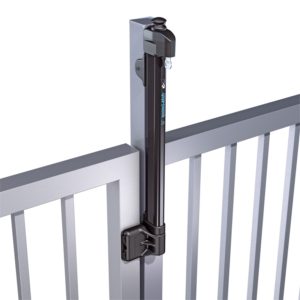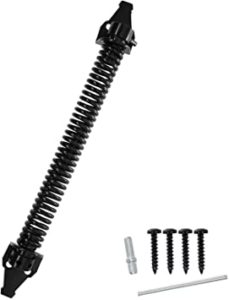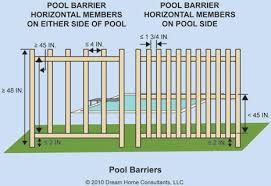Pool Code Fences for Florida
Pool Code fences for Florida:
Senate Bill 86 is also known as the “Preston de Ibern/McKenzie Merriam Residential Swimming Pool Safety Act” Created Chapter 515 of the Florida Statutes. • This is how it all started. • It became effective October 1, 2000.
Self closing hinges are hinges installed on any of the following fence types that allow the gate to close and latch unattended. These are used on pool code fences in Florida to keep the integrity of the pool fence in case an entrant forgets to close the gate behind them upon entering. they need to be used with a safety latch that locks on contact.
Best if used on the following fences:

Safety pool code fence latches function the same as self-closing hinges in that they automatically lock behind some entering a pool area. They need to be used in conjunction with self-closing hinges.

Though they can be used on any type of pool code fencing, the springs work great on wood gates as they are usually stronger and more aggressive.

Remember, 48″ is the minimum requirement for all pool code fencing. There are many variables to this law, but if you stay with a minimum of 45″ in between horizontal rails, you will be good. The image to the right will help with most questions on pool code fences for Florida.

The Florida Legislature created the Residential Swimming Pool Safety Act to reduce the number of drowning fatalities in the state. As of 2009, when the Act became law, drowning was the leading cause of accidental death, including many age groups of children. Proponents of the Act believe requiring barriers or fences around pools will help prevent drowning fatalities.
Under the Act, all outdoor swimming pools must have a 4-foot fence or another barrier around the outer perimeter of the pool, with no gaps in coverage. The barrier must also be sufficiently away from the pool’s edge so a child who penetrates the barrier or fence does not immediately fall into the pool. Entry through the barrier and to the pool must open outward and have a self-closing and self-locking device that is beyond a child’s reach.
Pools indoors or within a screened-in area are not required to have a fence or other barrier if all windows and doors that provide access to the pool have a wired safety alarm or have a self-closing, self-latching device 54 inches or more above the ground.
Small, shallow temporary pools, often referred to as “kiddie pools” are exempt from fencing requirements. Public pools and private community pools, such as pools in a condo or apartment complex, are also exempt under the act but are under more stringent Florida laws for child safety.
Failure to erect a safety barrier or enact other approved safety devices is a second-degree misdemeanor under Florida law. However, if the property owner attends a drowning prevention program and complies with the act’s requirements within 45 days, the state drops charges.
For detailed information on The Residential Swimming Pool Safety Act, please view Senate Bill No. 86.
The Public swimming pools in Florida must be VGB Federal Pool and Spa Safety Act compliant.
Signed by U.S. President Bush in December 2007, the VGB Pool and Spa Safety Act (P&SSAct) has been in effect since December 19, 2008. This code is designed to prevent swimming pool accidents.
The VGB Act established U.S. CPSC standards for pool and spa insurance. Under the law, every drain cover must meet ASME/ANSI A112.19.8-2007 in all public pools and spas. The water facilities which have only one main drain different than an unblockable drain must establish a 2nd device to contend for entrapments.
The fabrication, the trade, or retail of drain covers that are not in conformity with the safety measures required by the CPSC is prohibited in the USA to ensure that all drain covers accessible in the marketplace are compliant with safety specifications.
Each public pool must set up anti-entrapment drain covers and implement other levels of security such as SVRS or barriers.
A pool contractor should verify that the pool and/or spa is compliant with the federal Virginia Graeme Baker Pool & Spa Safety Act.
For supplementary info about local safety requirements for private swimming pools, please call your city’s building department.
**The pool code for fencing in Florida is there to help save lives. Please follow the law.
Necessary cookies are absolutely essential for the website to function properly. This category only includes cookies that ensures basic functionalities and security features of the website. These cookies do not store any personal information.
Any cookies that may not be particularly necessary for the website to function and is used specifically to collect user personal data via analytics, ads, other embedded contents are termed as non-necessary cookies. It is mandatory to procure user consent prior to running these cookies on your website.